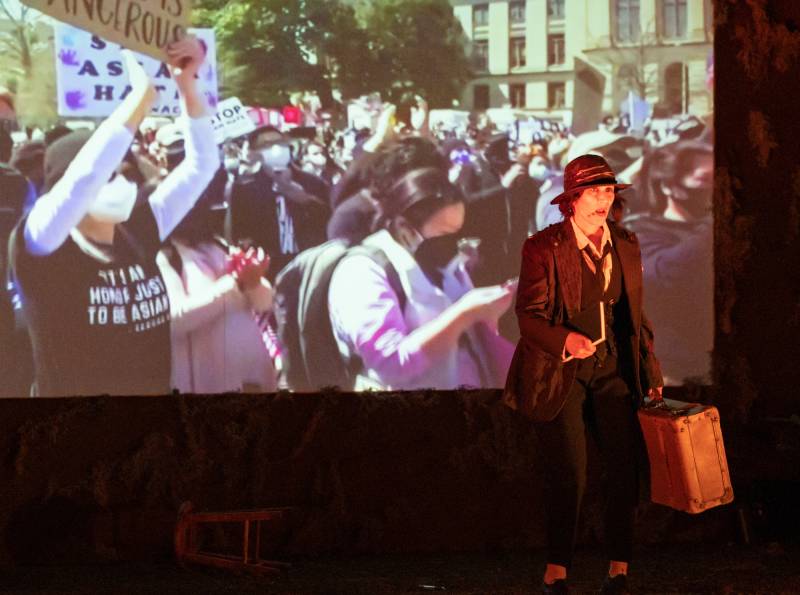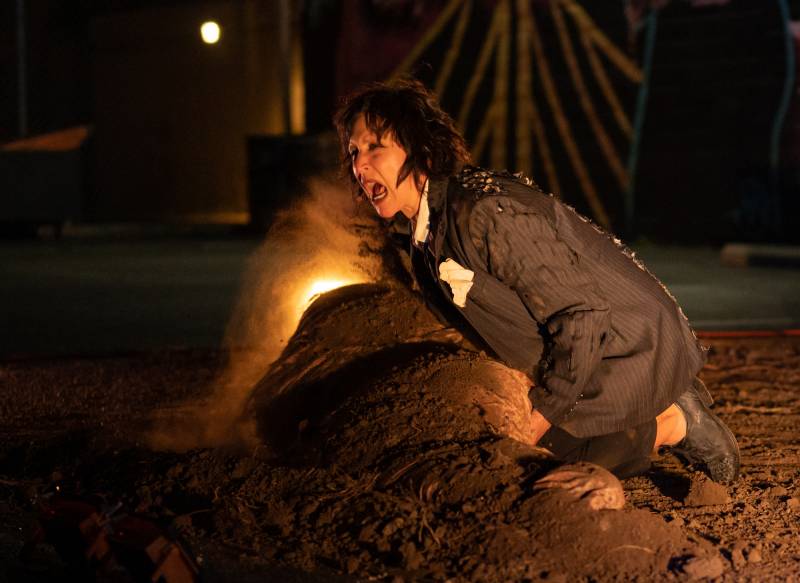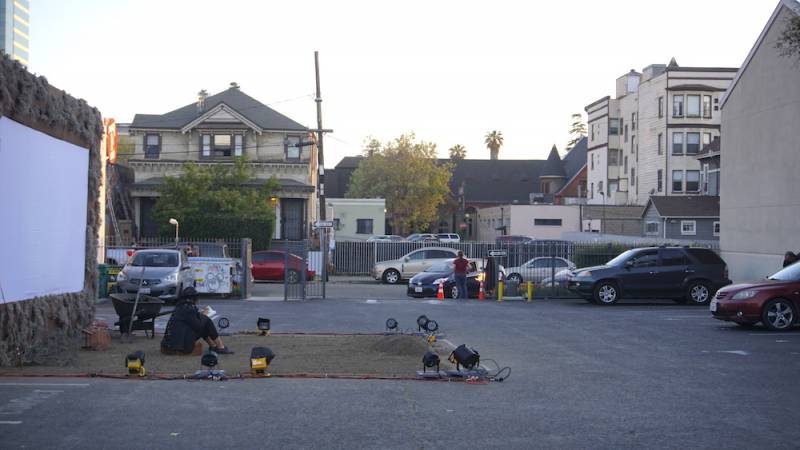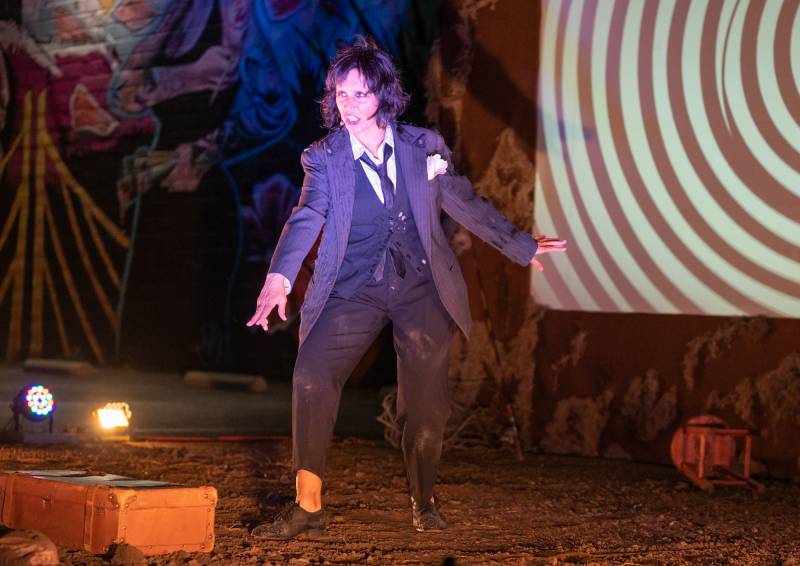“I will show you fear in a handful of dust” –T.S. Eliot, “The Waste Land”
A lone figure (Lisa Ramirez) runs in place, etched against a screen projecting a historical montage that begins and ends with a pandemic. As images span the 1918 Spanish Flu to present-day COVID-19, Ramirez’ face is an anguished rictus. She runs at the pace of a person who knows they cannot outrun that which threatens to overtake them. So begins Oakland Theater Project’s adaptation of T.S. Eliot’s “The Waste Land,” staged as a drive-in concept in the parking lot of the Flax art and design building in Oakland, on Martin Luther King Jr. Way.
A polite semi-circle of cars surrounds Ramirez’ modest square of dirt backed by a moss-covered projection screen (designed by Karla Hargrave). Windows are closed, and radios tuned into a micro-transmitted channel. As the April twilight deepens into night, so too does the unease seeping from the screen. A nervy soundscape (created by Elton Bradman) mixes Nevermind with lounge music with radio static. Archival footage compiled by Erin Gilley flashes across the screen: soldiers and protesters, cracked earth and forest fires, police barricades and atom bombs, doctors and politicians.

Ramirez herself appears timeless—outside of time—dressed in a deconstructed black suit and a flat-brimmed black hat (costume design by Regina Evans). There’s a touch of Chaplin’s Tramp about her, and more than a touch of Brechtian rogue. Billed as the poet, the prophet, and the people, Ramirez portrays a legion of seekers with singular focus.
With the possible exception of “Macavity the Mystery Cat,” “The Waste Land” is probably Eliot’s best-known work. A touchstone of Modernist poetry, its 434 lines traverse a dark landscape of everyday cruelties and conflicting perspectives intoned by the voices of multitudes. Packed with references to mythologies and memories, archetypes and anxieties, the poem reads alternately like a crash course in the “classics” and a bitter repudiation of them. Upon first read, it can appear impenetrable—a criticism leveled at Eliot in his own time—and yet the rhythmic inflections built into the lines give it a disconcerting freshness even 99 years after publication.





